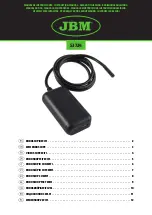
Serial bus analysis
R&S
®
RTB2000
248
User Manual 1333.1611.02 ─ 11
Remote command:
CHANnel<m>:THReshold:FINDlevel
Type
Selects the CAN-High or CAN-Low line. CAN uses both lines for differential signal
transmission.
If you measure with a differential probe, connect the probe to both CAN-H and CAN-L
lines and select "High".
If you use a single-ended probe, connect the probe to either CAN_L or CAN_H and
select "High" or "Low" accordingly.
Remote command:
Bit Rate
Sets the number of transmitted bits per second. The maximum bit rate for High Speed
CAN is 1
Mbit/s. The bit rate is uniform and fixed for a given CAN bus.
"Predefined"
To select a bit rate from the list of predefined values, set "Bit rate" to
"Predefined" and select a value from the list.
"User"
To set another value, set "Bit rate" to "User" and enter a bit/s value.
Remote command:
Sample Point
Sets the position of the sample point within the bit in percent of the nominal bit time.
The sample point divides the nominal bit period into two distinct time segments, which
are used for resynchronization of the clock.
The CAN bus interface uses an asynchronous transmission scheme. The standard
specifies a set of rules to resynchronize the local clock of a CAN node to the message.
Remote command:
12.5.3
CAN trigger
Before you set up the trigger, make sure that the bus is configured correctly. See
Chapter 12.5.2, "CAN configuration"
CAN (option R&S
RTB-K3)
















































